Framing Devices: Photography Titles Merge Fact with Fiction, Reality and Illusion
Ask most people what photography is, and they would probably describe a medium unlike any other in its ability to convey true accounts of events, people, and the world around us. But there has always been another side of photography, one that creates deliberate fictions, using costumes, props, lighting, and other effects to restage scenes from literature or history or invent new narratives.
Ask most people what photography is, and they would probably describe a medium unlike any other in its ability to convey true accounts of events, people, and the world around us. But there has always been another side of photography, one that creates deliberate fictions, using costumes, props, lighting, and other effects to restage scenes from literature or history or invent new narratives. Tableau vivant photography goes back to the art form’s earliest years and has been a mainstay of the advertising and fashion worlds, continuing to inspire artists today. Even the genres considered most faithful to the truth—photojournalism and documentary—may borrow its elements: narrative, illusion, characterization, or references to historical scenes or personages. Merging fact with fiction, reality and illusion, it’s one of the most fascinating of photographic styles.—Michael Dashkin
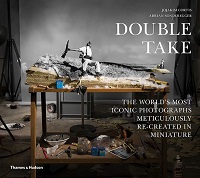
![]() Cortis, Jojakim & Adrian Sonderegger. Double Take: The World’s Most Iconic Photographs Meticulously Re-created in Miniature. Thames & Hudson. 2018. 128p. photos. ISBN 9780500021224. $40. PHOTOG
Cortis, Jojakim & Adrian Sonderegger. Double Take: The World’s Most Iconic Photographs Meticulously Re-created in Miniature. Thames & Hudson. 2018. 128p. photos. ISBN 9780500021224. $40. PHOTOG
Of the many ways to understand the history of photography, the work of the two Swiss artists featured in this fascinating title must be among the most unusual. The team of Cortis and Sonderegger give new meaning to the term constructed images. They build three-dimensional maquettes, precise and detailed models of historic, indeed iconic, photographs, which they then carefully light and photograph in their studio. Each page shows an image of an individual maquette in-studio, with text describing the original piece’s significance. The results manage both to pay homage to the source material while at the same time maintaining an ironic and playful stance. Among the 39 maquettes included are the flag raising on Iwo Jima, a still frame from the Zapruder JFK assassination film, and the Hindenburg disaster, all meticulous "appropriations" that draw in viewers, inviting us in to a deeper understanding of how photographs are made. VERDICT A delightful take on photography history and process.—Michael Dashkin, New York (MD)
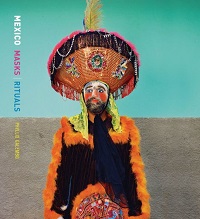 Galembo, Phyllis & others. Mexico, Masks & Rituals. D.A.P. May 2019. 196p. photos by Phyllis Galembo. ISBN 9781942185574. $45. PHOTOG
Galembo, Phyllis & others. Mexico, Masks & Rituals. D.A.P. May 2019. 196p. photos by Phyllis Galembo. ISBN 9781942185574. $45. PHOTOG
Photographer Galembo (b. 1952) has traveled the world (Nigeria, Ghana, Zambia, Haiti, Cuba, and Jamaica) documenting dancers in indigenous ritual masks and costumes. For the last ten years, she has pursued her project across Mexico, capturing "the aesthetic and cultural value of indigenous and Mestizo popular culture," as exemplified in ritual artifacts, writes Sergio Rodriguez-Blanco (Iberoamericana Univ., Mexico City) in a dual-language Spanish and English scholarly essay accompanying the photographs. The images, organized by festival (e.g., the Festival of the Virgin of Guadalupe; the Festival of Semana Santa) and location (Puebla; Nayarit), show dancers posed against plain backdrops, all the more effectively displaying the vivid colors and shapes of their costumes and the personalities of the characters they portray. It would be easy to overlook the acknowledgements section at the very end, the only place where the photographer’s own voice appears here, but it should not be missed.
VERDICT Students of ethnography, dance, and even costume design or fashion will value this title. The intensely colorful images, aided by the attractive graphic design, will captivate photography enthusiasts.—MD
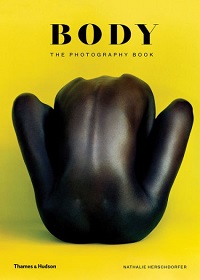 Herschdorfer, Nathalie. Body: The Photography Book. Thames & Hudson. Jun. 2019. 432p. photos. index. ISBN 9780500021583. $65. PHOTOG
Herschdorfer, Nathalie. Body: The Photography Book. Thames & Hudson. Jun. 2019. 432p. photos. index. ISBN 9780500021583. $65. PHOTOG
The human form has been a source of photographic inspiration since the medium was invented, with many books dedicated to this timeless subject, including William Ewing’s The Body, Deborah Willis’sThe Black Female Body, and Diane Fortenberry’s Body of Art. In this incarnation, art historian Herschdorfer (director, Museum of Fine Arts, Le Locle, Switzerland) pushes Ewing’s original 1994 concept (with his blessing) into the 21st century by redefining what "body" means in 2019. Featuring photographs from 175 contemporary artists, including Nan Goldin, Sally Mann, Catherine Opie, and Martin Parr, the volume defines the human form by a range of body-related subjects—images of dental impressions, medical equipment, dietary supplements, and blow-up sex dolls. Like Ewing, Herschdorfer organizes photographs into thematic chapters: "Physique," "Alter Ego," "Constructions," "Mutations," "Celebration," "Flesh," and "Love." Each investigates how advancing digital technologies, gender identity, and online social networking have redefined the photographic tradition of the nude. Although not original in its focus and structure, this stylish contemporary collection brings together a wide range of profound and contemporary photographs, beautifully reproduced in full color. VERDICT Recommended for all photography and art history enthusiasts.—Shauna Frischkorn, Millersville Univ., PA
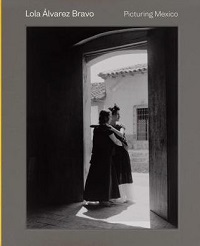 Lola Álvarez Bravo: Picturing Mexico. Yale Univ. 2018. 96p. ed. by Stephanie Weissberg. illus. bibliog. index. ISBN 9780300238709. $30. PHOTOG
Lola Álvarez Bravo: Picturing Mexico. Yale Univ. 2018. 96p. ed. by Stephanie Weissberg. illus. bibliog. index. ISBN 9780300238709. $30. PHOTOG
Lola Álvarez Bravo’s five-decade career spanned the 1920s–90s, and her photography contributed to a significant chapter in postrevolutionary Mexican history. Her work documented an era of dramatic change in Mexico, and, as photographer, educator, gallerist, and curator, Álvarez Bravo was an essential contributor to the modernist movement in her nation. Traveling throughout Mexico, she produced documentary photos for respected journals such as Mexican Folkways and El Maestro Rural and photojournalism for periodicals including Vea, Voz, Avance, and Frente a frente. Curator Weissberg (Pulitzer Arts Foundation) encourages readers to understand Álvarez Bravo’s career by looking closely at her imagery in context of her political and cultural moment, to learn more about the artist’s "working process and photographic principles." Included are almost 50 black-and-white images of urban and rural scenes, portraits of Mexican modernist figures (Felix Candela, Diego Rivera, María Izquierdo), and abstractions. Although Álvarez Bravo was a documentarian and journalist, some of the images have an extraordinary dreamlike aura, evoking surrealism.
VERDICT An excellent brief introduction to a photographer not well enough known in the United States.—MD
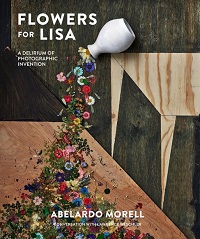
![]() Morell, Abelardo. Flowers for Lisa: A Delirium of Photographic Invention. Abrams. 2018. 144p. photos. notes. ISBN 9781419732331. $75. PHOTOG
Morell, Abelardo. Flowers for Lisa: A Delirium of Photographic Invention. Abrams. 2018. 144p. photos. notes. ISBN 9781419732331. $75. PHOTOG
The artist’s process—and the relationships that motivate the individual art maker—are at the very heart of every art practice. What started out for Cuban-born American photographer Morell (b. 1948) as a single image created for his wife’s birthday became an extended series that explores the myriad possibilities of the flower still-life genre. This subtitle accurately conveys the riotous colors and wild forms in the 76 beautifully printed color still-lifes included here. A Q&A interview of the artist conducted by journalist and author Lawrence Weschler (New York Inst. for the Humanities, New York Univ.) explores Morell’s career-long fascination with issues of perception and photography. Morell’s psychotherapist wife, Lisa McElaney, contributes a perceptive essay both about the artworks and her relationship with the artist.
VERDICT Using collage, multiple exposure, mixed media, and making reference to art traditions classic and modern, Morell’s images are a delight for both fans of the genre and for those interested in how this singular contemporary artist pursues his craft.—MD
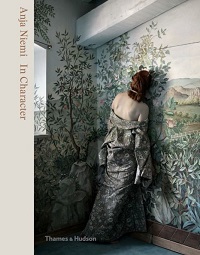 Niemi, Anja. Anja Niemi: In Character. Thames & Hudson. May 2019. 240p. photos. ISBN 9780500545119. PHOTOG
Niemi, Anja. Anja Niemi: In Character. Thames & Hudson. May 2019. 240p. photos. ISBN 9780500545119. PHOTOG
This compact but comprehensive and handsomely designed title offers a career-to-date summary of the work of Norwegian photographer Niemi (b. 1976). Merging self-portraiture with performance art, Niemi places herself in staged environments and inhabits fictional personas of her own creation, contexts for her to be, in her words, both voyeur and subject. Her stagings evoke film stills and stock film characters (the cowboy, the starlet), and Niemi cites the psychologically complex, startling imagery of directors Ingmar Bergman, Wim Wenders, and David Lynch among her influences. The charged scenes she creates allow the artist the opportunity to explore questions of identity, gender, and the multiplicity of selves within each individual. A perceptive essay and illuminating interview with Niemi by Max Houghton (Univ. of the Arts, London) add value. VERDICT An excellent introduction to the intriguing work of a talented contemporary photographer.—MD
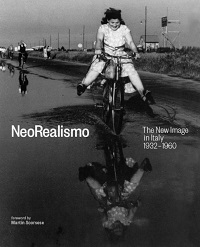
![]() Viganò, Enrica. NeoRealismo: The New Image in Italy 1932–1960. Prestel. 2018. 352p. illus. ISBN 9783791357690. $65. PHOTOG
Viganò, Enrica. NeoRealismo: The New Image in Italy 1932–1960. Prestel. 2018. 352p. illus. ISBN 9783791357690. $65. PHOTOG
Independent curator and writer Viganò (photographic events organizer at Admira) assembled this substantial catalog accompanying an exhibition at New York University’s Grey Art Gallery. Neorealism is a term more closely associated with postwar Italian cinema than with still photography, so it’s fitting that film director Martin Scorsese wrote the foreword. Viganò and other contributors argue persuasively in scholarly essays for a neorealist style of photography with distinct themes, aesthetic, and contributions to postwar Italy. Extraordinary black-and-white photographs of people, landscapes, and cityscapes are grouped by broad subject ("Poverty and Reconstruction," "Ethnographic Investigation," "Photojournalism and the Illustrated Press"). The assembled photos and accompanying text help readers understand the role neorealist images played in Italy’s recovery from wartime devastation to proud and prosperous democracy by 1960. Includes brief biographies of neorealist photographers and a comparative chronology of events in Italy, in photography, and in neorealism.
VERDICT Will appeal to students of Italian film and photography history, and to those who enjoy browsing black-and-white photographs that are both dramatic history and quite beautiful.—MD
 Weiss, Marta. Making It Up: Photographic Fictions. Thames & Hudson. Apr. 2019. 192p. illus. ISBN 9780500480373. $34.95. PHOTOG
Weiss, Marta. Making It Up: Photographic Fictions. Thames & Hudson. Apr. 2019. 192p. illus. ISBN 9780500480373. $34.95. PHOTOG
This volume in London’s Victoria & Albert Museum (V&A) ongoing "Photography Library" series celebrates the Fall 2018 opening of the V&A Photography Centre, and is published in conjunction with an exhibition of the same name. The title explores one of the earliest styles of photography: the tableau vivant, staged photographs that use actors, models, and props to create fictional scenes. Nineteenth-century practitioners (William Henry Fox Talbot, Julia Margaret Cameron, Oscar Gustave Rejlander, among others) drew inspiration from Old Master paintings, genre art, poetry, opera, and literature, while contemporary photographers often look to film and performance art. By the 1920s, photography as tableau vivant had largely fallen out of favor as modernist theories predominated, but it has returned in recent decades among contemporary artists exploring narrative approaches and questions about photography’s essential nature. This book’s format, perfect for browsing, presents one photo per page alongside succinct, informative captions.
VERDICT Readers more familiar with documentary approaches and photojournalism will find this title fascinating.—MD
Michael Dashkin (MLS, Queens Coll. CUNY; MA, Studio Art, New York University) is a writer based in New York City and a 2017 LJ Reviewer of the Year. He has reviewed art and photography titles since 2001 and compiled LJ’s annual photobook roundup since 2015. An LJ reviewer since 2001, Shauna Frischkorn is MFA professor of photography, Millersville University of Pennsylvania
This article was originally published in Library Journal's June 2019 issue
Add Comment :-
RELATED
ALREADY A SUBSCRIBER? LOG IN
We are currently offering this content for free. Sign up now to activate your personal profile, where you can save articles for future viewing








